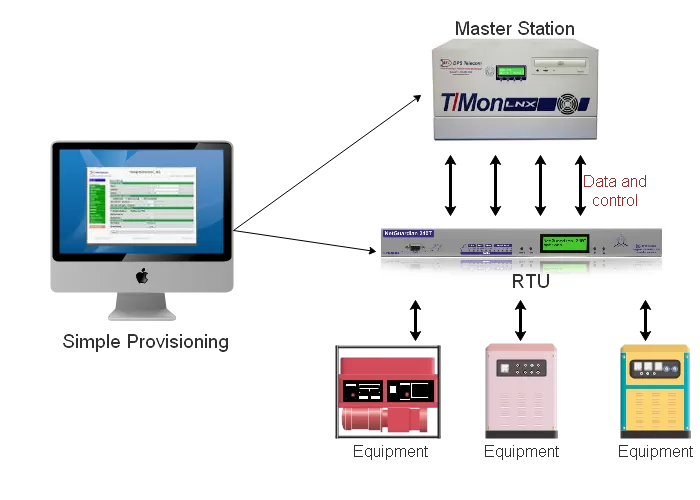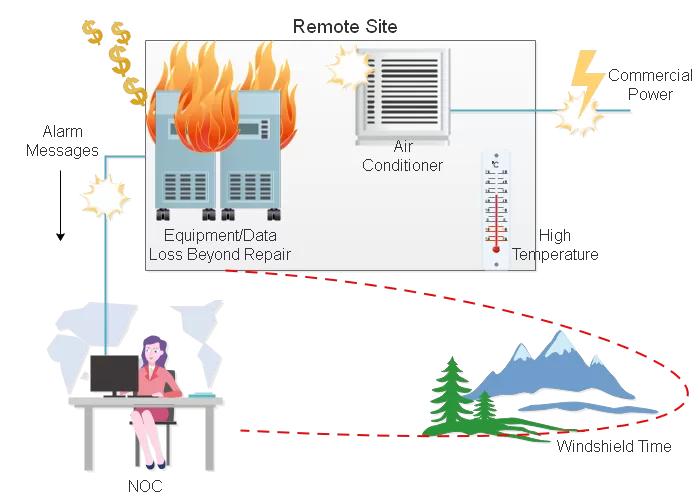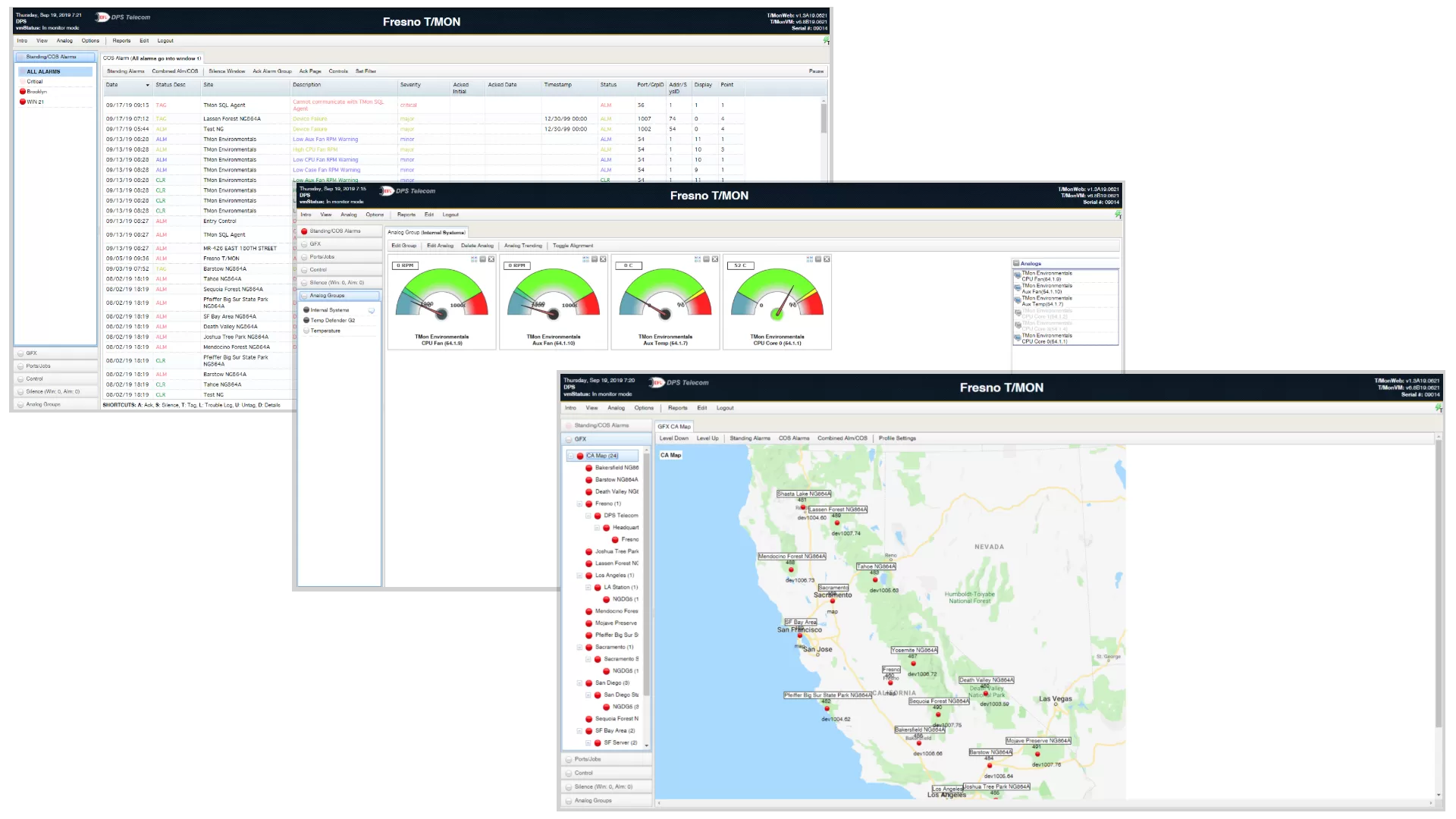Check out our White Paper Series!
A complete library of helpful advice and survival guides for every aspect of system monitoring and control.
1-800-693-0351
Have a specific question? Ask our team of expert engineers and get a specific answer!
Sign up for the next DPS Factory Training!

Whether you're new to our equipment or you've used it for years, DPS factory training is the best way to get more from your monitoring.
Reserve Your Seat TodayData loss is a serious issue for all organizations. Losing information means that you'll have to spend time and money to recover your essential data and restore your network. If the information can't be recovered, you'll most likely see a lasting impact in your network's operational health.
There are many ways that data loss can happen, but many companies are learning that putting a remote monitoring system in place helps to safeguard their information. Remote monitoring and control systems collect data from a network located in a distant site and bring it all back to you.
With this visibility, you can quickly take action when an alarm or other network threat happens. Ultimately, you'll be maintaining the integrity of your mission-critical network and operations uptime.

But, that's not all a remote monitoring system can do. The best systems out there will have important capabilities to help you protect your information.
Read on to learn how an efficient remote monitoring system can help you keep your data loss at a minimum or even prevent it altogether.
Losing your information is a major setback in your productivity that can ultimately affect your customers or end-users. There are a number of different ways data loss can happen, and knowing its causes is critical in order to prevent it and avoid costs to your business.
Here are some common causes of data loss:
Do you rely on your personnel to record your mission-critical data?
Humans are not infallible. Everybody makes mistakes and sometimes these can result on failing to record some information or even unintentional deleting and overwriting important data. Especially after driving long hours to go to a remote site, your techs might already be tired, so the chances of missing information are greater.
Commercial power outages at your remote sites can substantially interrupt your network operations. If you don't have a backup power generation method, you'll not only lose important information about your network but also it will be completely shut down.
Also, if power outages or surges tend to happen frequently at your remote location, the lifespan of your equipment will be greatly reduced and it will be likely to crash - taking with them relevant data.
The environment in your remote sites is a critical piece of keeping your network uptime and avoiding data loss. The environmental levels refer to the physical setting around your equipment and processes.
Adverse conditions can negatively impact your remote infrastructure and prevent data to reach you. These conditions include high (or very low) temperatures, humidity, and flooding.
In recent years, viruses, malware, hacking, and data breaches have become a much more common problem. This makes efficient cybersecurity critical for most companies.
For business, viruses and malware can steal and delete information or even totally damage the company's operations by seriously affecting its network functionality. Also, unauthorized people accessing your network can cause serious harm to your data, deleting and stealing any information they want. Hackers can even impair entire network processes if they have sufficient access to your system.
You can lose all your important information if your equipment gets stolen.
When equipment is left unattended the risk of theft becomes a serious issue. That's even more true if you have remote locations that house expensive gear or desirable assets, such as copper wire.
Copper wire is very common and it damages your equipment, which will then disrupt your network operation. This not only causes data loss but will also bring expensive costs with fixing equipment and replacing wires.
From earthquakes to fires, most natural disasters will happen unexpectedly and will bring major consequences to your network. It can quickly destroy equipment that would have lasted for many more years. Not only your gear, but your data will be damaged as well.
As with anything that involves your company, the first step in data loss prevention is having a plan. You need to know what to do in order to prevent losing your important information.
If you have a remote monitoring system, then you are on the right path. There are many ways these systems can help you avoid data loss.
Here are some of the main ways remote monitoring will protect your network information:
Deploying a remote monitoring system means that your techs won't have to manually collect and record data about remote equipment. This becomes an automated process, which minimizes the amount of human interaction with data.
Monitoring systems lead to an optimized workflow. This leaves little room for human error to occur and your techs will have more time to work on other important tasks.
As we've talked about before, a commercial power outage can interrupt your network operation and cause you to miss information as well. To avoid this, you need to have backup power in place to take over when commercial power fails.

However, to make sure your backup power will be able to support you when you lose primary power at your sites, it should be monitored at all times. After all, what good is your backup power if it fails during a power outage?
A backup power monitoring system will keep track of your backup power supply. It will let you know when a change of status or problem happens, such as if your generator has low fuel. With a remote monitoring system, you won't have to guess if your network will still be operational and if your data is still being collected.
Without protection against inadequate environmental levels, you will be facing potential network outages that can disrupt your data stream. One of the most efficient ways to prevent this is to invest in an environmental monitoring system that will keep track of key conditions. This system will alert you in real-time whenever an issue is detected.
To get the most detailed visibility over your site's conditions, your remote monitoring system should have four separate analog thresholds. This way, you can establish separate major and minor alarms - for both high and low temperatures, for example. Keep your conditions inside their optimal thresholds will ensure an optimum operating environment for your equipment and will guarantee that your data collection processes remain efficient.
In many cases, data stolen by hackers or ill-intended people can't be recovered. So, it's essential that you take actions to make sure your information is confidential and that unauthorized people can't access it.
Efficient remote monitoring devices support SNMPv3. SNMPv3 is a communications protocol that allows your RTUs to send encrypted messages to your master station. Also, they will have the HTTPs feature for secure web viewing of your monitoring system.
If you ever been a victim of vandalism or theft, you know how much this can negatively impact your network data. With a building access control system, you can monitor any entry or exit in your remote facilities, which safeguards your network and protects your mission-critical equipment.
Access control systems will support keyless entry, site access logs, video surveillance, and notification of breaches of site security. Also, efficient building access systems will allow you to monitor the physical security of your site through the same platform you use to monitor your remote equipment and processes.
Last, but not least, monitoring systems can backup your network information. This is one of the best measures in order to prevent data loss.
For example, when a natural disaster happens, it can destroy a company's network entirely. And it is often very hard or not even possible to recover all the lost data. This is why it's so critical to back up data in a different location that won't be compromised if a disaster hits your remote site.
So, you should have a routine for backing up critical information. This means that, in the event of data being corrupted or lost for any reason, it can be recovered to the point it was backed up. Also, remember to test it to make sure all backed up information is definitely recoverable in case an emergency happens.
There are many reasons why you might end up losing data. However, if you have a remote monitoring system in place, you can prevent situations that can lead to that.
Do you need help implementing a remote monitoring system to protect your data against losses and ensure your network uptime?

We can help you. Our monitoring experts can design, manufacture, and implement a perfect-fit solution for what you need. With more than 30 years in the industry, our custom-fit designs have helped numerous clients protect their networks and we can do the same for your company.
Start your journey today. Reach out to us and discover a custom solution for you.

Morgana Siggins
Morgana Siggins is a marketing writer, content creator, and documentation specialist at DPS Telecom. She has created over 200 blog articles and videos sharing her years of experience in the remote monitoring industry.